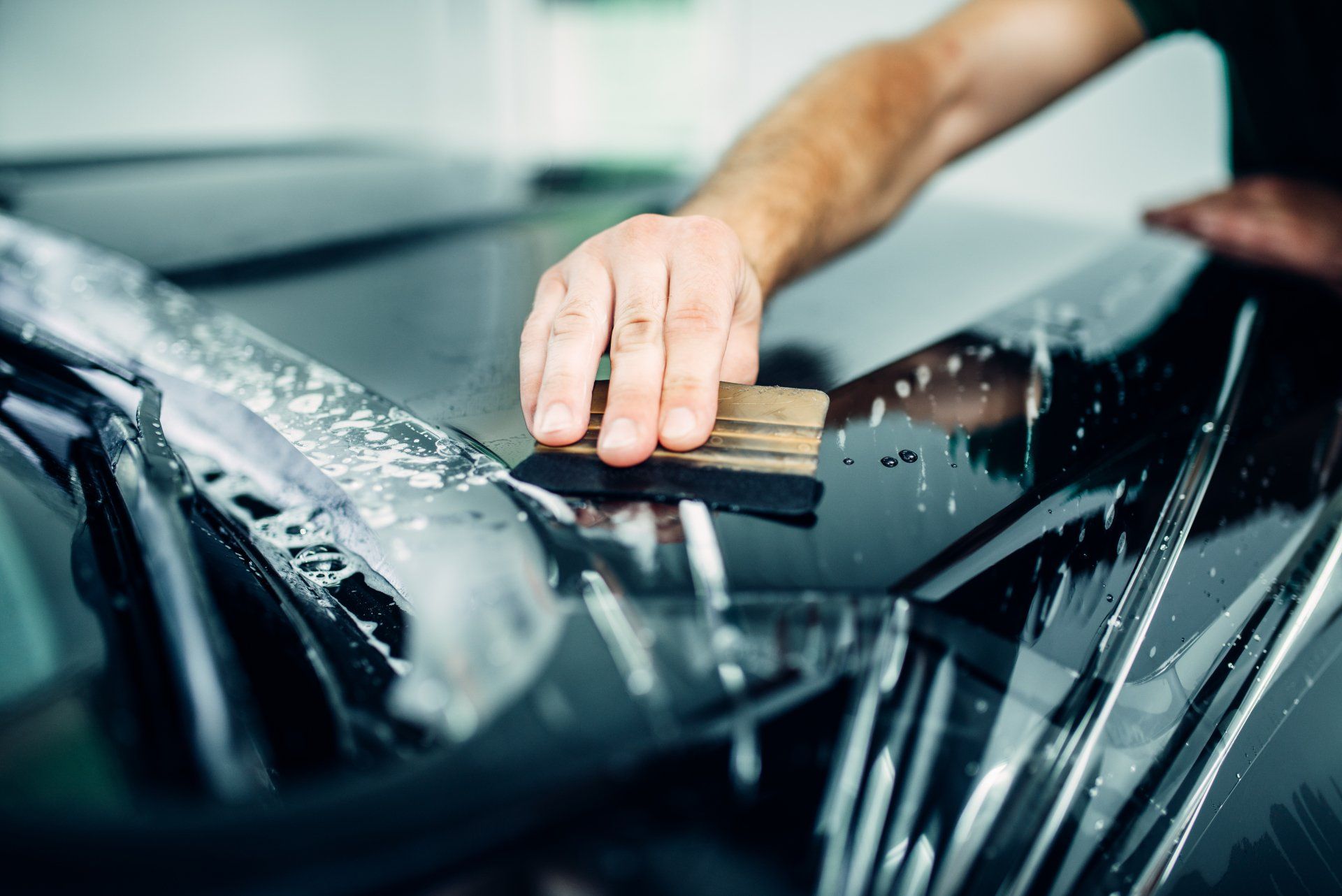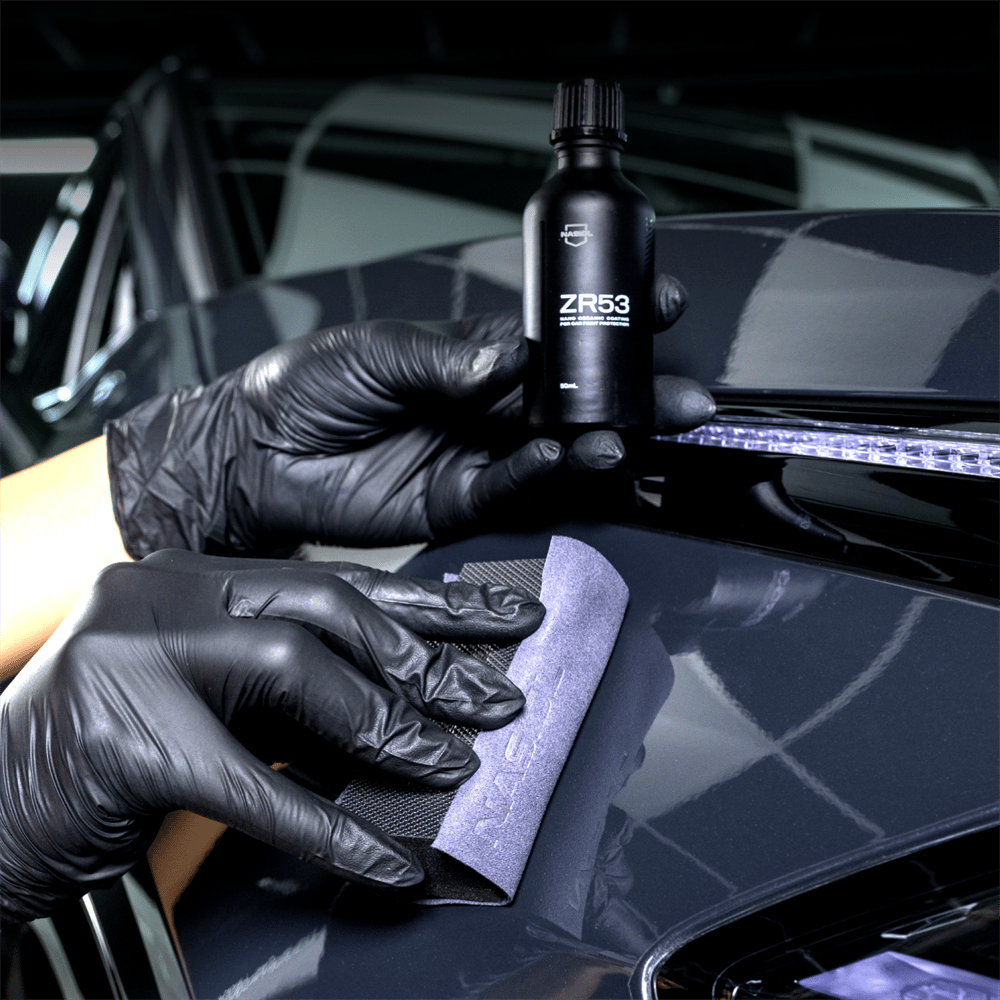The Step-by-Step Guide of Using Ceramic Coating to Your Car
The Step-by-Step Guide of Using Ceramic Coating to Your Car
Blog Article
Ceramic Coating vs. Typical Wax: Which Offers Better Protection?
The dispute between ceramic finish and standard wax for lorry security is one that qualities mindful assessment, specifically in terms of toughness, resistance to environmental variables, and overall upkeep needs. While ceramic finishes guarantee prolonged long life and exceptional protection against a selection of hazards, standard wax might appeal to those seeking a much more budget-friendly, albeit temporary, remedy.
Review of Ceramic Finish
Ceramic coating has acquired considerable popularity amongst auto fanatics and professionals alike for its sophisticated protective top qualities. This ingenious solution includes a fluid polymer that chemically bonds to the vehicle's factory paint, developing a resilient layer of security. Unlike conventional wax, which commonly lasts for a few weeks to months, ceramic coatings can give resilient protection for several years, relying on the item made use of and application approach.

While the preliminary price of ceramic layer may be higher than that of traditional wax, the long-term advantages, including resilience and reduced maintenance frequency, often warrant the financial investment. As vehicle technology continues to develop, ceramic finishes have become a favored option for those looking for optimum security and longevity for their vehicles.
Overview of Standard Wax
The appeal of standard wax hinges on its simplicity and convenience of usage, making it a popular choice amongst automobile owners looking for to improve their lorry's look and provide a standard degree of protection. Generally originated from natural carnauba or artificial polymers, typical wax creates a slim protective layer over the paintwork. The application procedure is straightforward, commonly entailing a basic rubbing with a microfiber cloth, making it easily accessible to both novice and skilled users.
Conventional wax items are available in numerous solutions, each created to satisfy certain demands, such as improving shine or supplying water beading. The convenience of wax permits usage on various surfaces, consisting of paint, glass, and also plastic trim. While the application can be done by hand or maker, the trick is to make certain a clean surface area for ideal attachment.
Nonetheless, one noteworthy characteristic of typical wax is its fairly brief life expectancy contrasted to modern-day options. Commonly offering defense that lasts from a couple of weeks to a couple of months, regular reapplication is essential to preserve its performance. Regardless of these constraints, conventional wax continues to be a prominent option for auto enthusiasts who value the aesthetic improvement it supplies.
Key Protection Functions
When considering paint defense for lorries, it's vital to understand the essential functions that identify typical wax from more innovative options like ceramic coatings. Among the main safety characteristics of ceramic finishings is their toughness. Unlike wax, which generally lasts a couple of weeks, ceramic layers can endure for several years, giving long-term defense against environmental contaminants.
Ceramic layers develop a hydrophobic surface area, driving away water and avoiding dust, crud, and other particles from adhering to the paint. This attribute not only improves the automobile's appearance however also decreases the regularity of washing. In addition, ceramic layers supply premium UV security, protecting the paint from hazardous sun exposure that can cause fading and oxidation.
On the other hand, standard wax provides a more temporary obstacle against elements yet lacks the resistance to scrapes and chemical discolorations that ceramic finishings offer. While wax can improve gloss, its safety capacities are limited, particularly against harsher environmental elements such as bird droppings, tree sap, and roadway salt. In summary, the key defense attributes of ceramic coatings dramatically beat those of traditional wax, making them a premium selection for resilient automobile treatment.
Application Process Contrast

In comparison, the application of ceramic finishes is extra intricate and time-sensitive, usually needing expert aid for optimal outcomes. The vehicle's surface area should be thoroughly cleaned, sanitized, and brightened to remove imperfections prior to the coating is used. Once prepared, the coating is used in several layers, with each layer requiring particular healing times, typically boosted by warm lamps. This careful process can cover numerous hours to numerous days, depending upon the number of layers and wanted finish.
Eventually, the option between wax and ceramic layer hinges not just on security levels but additionally on the time, competence, and resources readily available for their corresponding applications. - ceramic coating
Price Analysis and Durability
Cost plays a substantial function in the decision-making process in between ceramic finishes and typical waxes. Ceramic coatings generally regulate a higher ahead of time investment, ranging from $500 to $2,000 relying on the high quality, brand, and specialist application services. This preliminary price can be credited to the sophisticated innovation and products used in ceramic formulas, which use exceptional resilience and protection.
In contrast, traditional waxes are far more budget-friendly, generally setting you back in between $20 to $100 for do it yourself applications. The longevity of wax products is restricted, often calling for reapplication every couple of months to maintain their safety qualities. This repeating cost can collect over time, making wax much less affordable over time.
Ceramic finishings, while a lot more expensive initially, deliver long-lasting outcomes, usually going beyond 2 to five years with correct upkeep. This durability can supply substantial savings gradually, specifically for lorry useful source owners who prioritize security and visual preservation - ceramic coating. Inevitably, the option in between ceramic coverings and standard waxes need to think about both first costs and lasting value, considering the upkeep requirements and preferred security level click to find out more for the car
Verdict
In summary, ceramic layers offer superior defense for car paint contrasted to typical wax, offering boosted sturdiness, resistance to environmental variables, and hydrophobic properties. While the initial investment for ceramic coverings is higher, their durability and minimized upkeep needs justify the cost. Ultimately, for those seeking long-term vehicle care and security, ceramic finishes stand for a more efficient solution than traditional wax, which offers just short-term benefits.
The discussion in between ceramic coating and typical wax for car defense is one that benefits cautious examination, particularly in terms of durability, resistance to ecological variables, and total maintenance requirements.When considering paint defense for lorries, it's crucial to understand the crucial attributes that distinguish standard wax from more advanced choices like ceramic layers. In summary, the vital defense features of ceramic layers dramatically outperform those of standard wax, making them a superior option for durable vehicle care.
Eventually, the choice in between conventional waxes and ceramic layers should think about both initial prices and long-term worth, factoring in the maintenance requirements and preferred security level for the car.
In summary, ceramic finishings give remarkable security for car paint contrasted to conventional wax, offering enhanced sturdiness, resistance to ecological variables, and hydrophobic visit this website residential or commercial properties.
Report this page